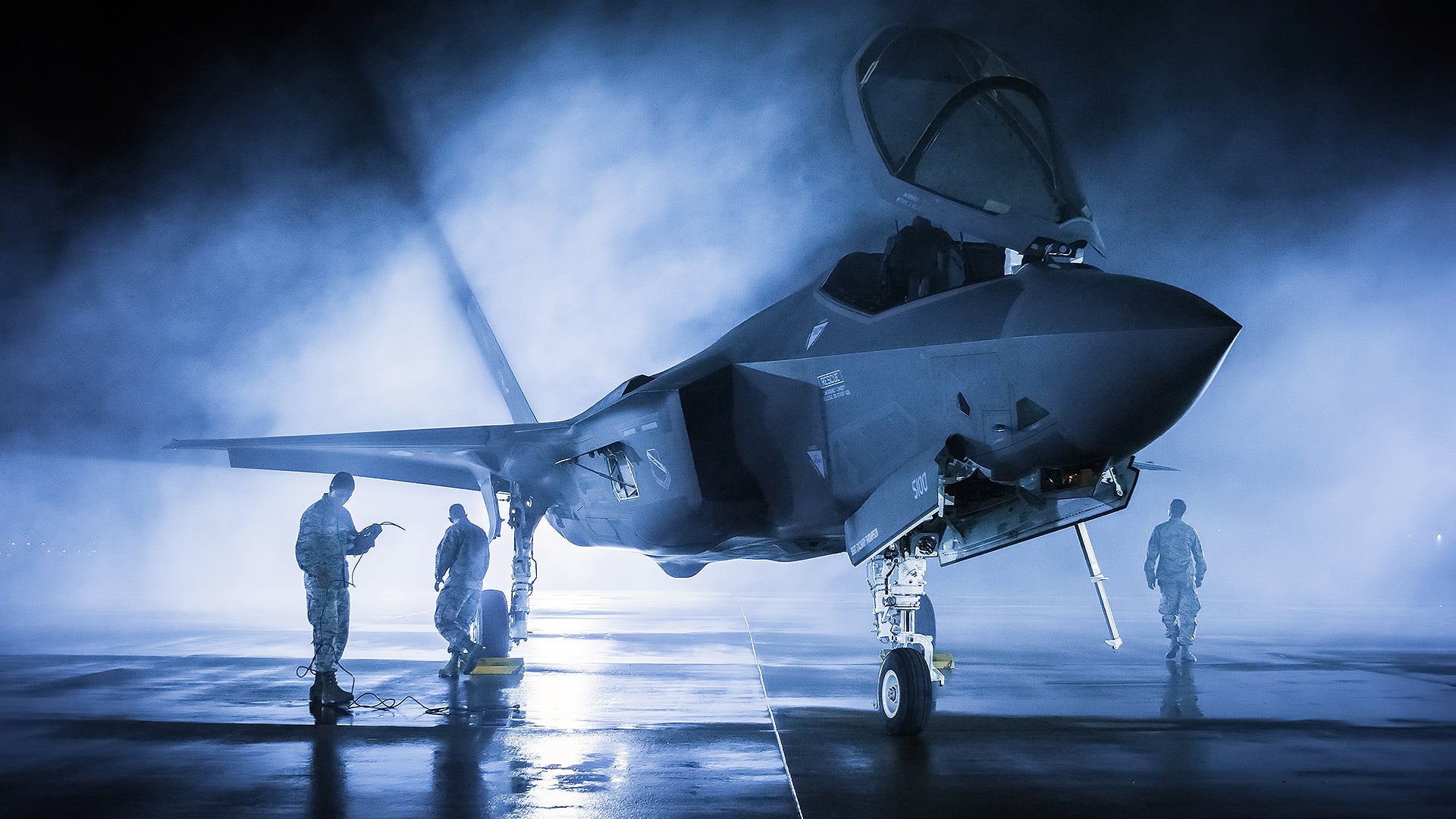The first operational deployment of the USAF’s F-35As will begin next month according to Pacific Command. A dozen of the stealth fighters and 300 airmen from the 34th Fighter Squadron based at Hill AFB in Utah will deploy to America’s sprawling Kadena Air Base in Okinawa, Japan. The assignment will last six months with the jets first arriving in early November.
The 34th Fighter Squadron’s F-35As will join the USMC F-35Bs operating at MCAS Iwakuni in Yamaguchi Prefecture, Japan, that have been forward based there since last January. The F-35Bs have been active in the region, including flying armed escort flights with B-1B Bombers on “show of force” missions over and near the Korean Peninsula. The USAF’s F-35As, with their enhanced range and larger internal bomb carrying capability, will likely play heavily into operations over the tense region as the U.S. and its allies and North Korea inch closer to war.
The F-35A has already visited Korea. Just last week two of Hill AFB’s jets arrived in South Korea for the Seoul International Aerospace and Defense Exhibition (ADEX). The mini deployment served two purposes. The first was to show off the fighter to Republic of Korea (ROK) forces who will also be flying the type in the not so distant future.
South Korea has ordered 40 F-35As at a cost of roughly $6.5B. The jets will begin arriving sometime in 2018 and follow-on orders are possible, although South Korea is looking to land an agreement with the U.S. to use some of the F-35’s technologies for their own stealthy indigenous fighter program dubbed the Korean Fighter Experiment (KFX).

The visit also served as an experimental training mission for maintainers and support personnel who will have to be able to fix and operate six times the number of jets for far longer a period of time during the F-35A’s upcoming inaugural operational deployment.
And keeping jets flying has been a challenge for the F-35 community on multiple levels beyond the fact that it is a very complicated aircraft that has a skin that must be kept in near perfect condition to be mission ready in most circumstances. It now seems as if spare parts—or the lack thereof I should say—is causing additional woes on the F-35 fleet. Bloomberg reports:
“The Pentagon is accelerating production of Lockheed Martin Corp.’s F-35 jet even though the planes already delivered are facing “significantly longer repair times” than planned because maintenance facilities are six years behind schedule, according to a draft audit.
The time to repair a part has averaged 172 days — “twice the program’s objective” — the Government Accountability Office, Congress’s watchdog agency, found. The shortages are “degrading readiness” because the fighter jets “were unable to fly about 22 percent of the time” from January through August for lack of needed parts…
…Already, the agency said in the draft obtained by Bloomberg News, the Defense Department “must stretch its resources to meet the needs of continued system development and production while at the same time sustain the more than 250 aircraft it has already fielded.
Upkeep of the F-35 fleet will become more challenging as the Pentagon prepares for what the manager of the program has called a “tsunami” of new production toward an eventual planned U.S. fleet of 2,456 planes plus more than 700 additional planes to be sold to allies.”
The article went on to mention the F-35B’s upcoming deployment:
“The GAO also disclosed that the F-35B — the Marine Corps version of the fighter that’s scheduled to begin ship deployments next year — won’t have required maintenance and repair capabilities at sea and “will likely experience degraded readiness.””
I have always maintained that the most crushing fiscal aspect of fielding a predominantly stealthy manned fighter force is that the cost of operation, especially as the platform ages, will be far greater than the vast majority of the aircraft they replace. Lockheed has claimed that won’t be the case, but there are few metrics, not to mention little logic, available to support such a claim. Although the jet has revised, lower maintenance radar absorbent material coated skin, stealth aircraft have always been maintenance man hour hogs. Combine that with the complexity of the F-35, and it doesn’t take a crystal ball to realize the USAF will have to budget more money for sustainment than it already does for its existing fighter force.

As for the spare parts issue, we don’t know how much this has to do with the F-35’s parts and LRU breakage rate and how much it has to do with the supply chain itself. Generally speaking, the services almost myopically concentrate on investing in production instead of sustainment. Fears of program cancellation and special interests drive this, especially for the Pentagon’s high-end purchases.
Then the aircraft hits the field with a miserable availability rate due to lack of readily available spare parts. Usually the project office and the manufacturer then scramble to flood the early deployments with spares and direct contractor support so that the “in the field” readiness numbers appear to be improving. The MV-22 Osprey is a near perfect case of this ridiculous phenomenon, so it’s not like the F-35 is alone when it comes to this issue. And depending on the exact metrics, the procurement process could be more to blame than the jet itself.
We’ll have to wait and see how the USAF and Lockheed Martin deal with this first deployment as literally the world will be watching—including well over a dozen F-35 customers and perspective buyers. I think you would be safe betting that those 12 F-35s in Japan will be flying constantly, even if it means the nearly 200 other F-35s located back in the states spend even more time on the ground than they already do.
Contact the author: Tyler@thedrive.com

